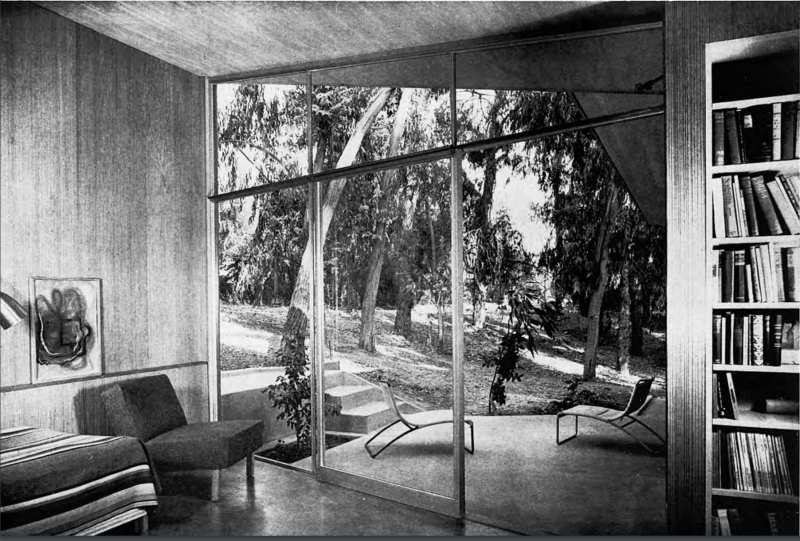The Case Study Houses were and are an illustration of modernism’s intended audience—the masses. These homes were intended to change the way we look at residential design and forever alter the way we live. Built or unfinished, preserved or lost, join us as we take a closer look at each of the iconic designs that carry the name “Case Study House.” In this installment we look at house #10.
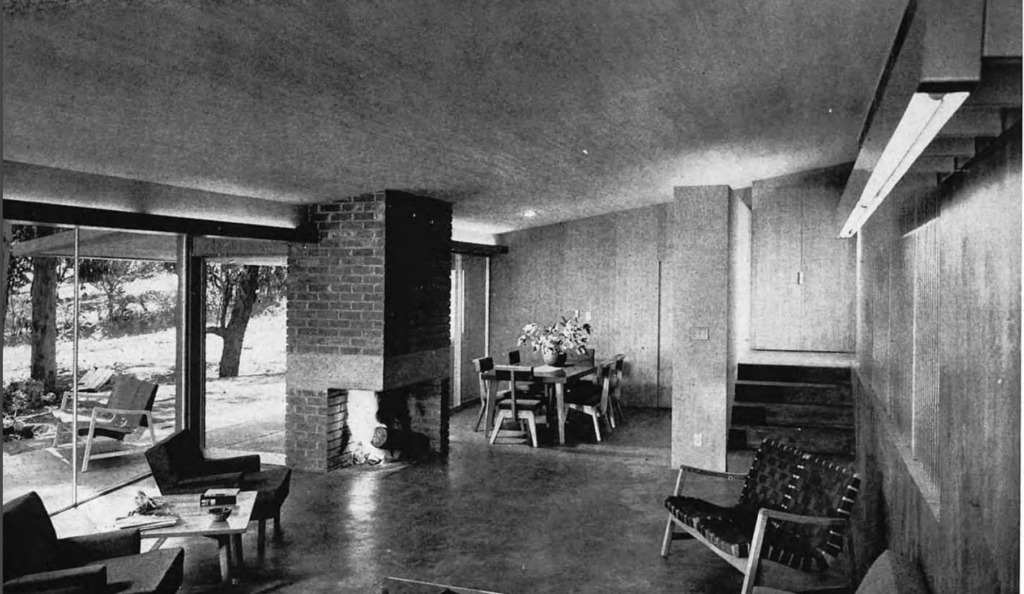
Meet House Case Study House #10
Interestingly, CSH #10 was actually added to the Case Study House program after its completion in 1947 since Arts & Architecture had seen many of their planned houses unrealized up to that point. Despite not being formulated through the project, the home embodied several key principles of the program including innovative techniques and materials, affordability and the indoor-outdoor living atmosphere.
Father and son team Kemper Nomland and Kemper Nomland Jr. designed the Pasadena home using mainly wood, large glass walls and post-and-beam structure. The architects used the sloping site as inspiration for their 3-level design. “Due to the slope of the land the rooms were planned on several levels, enabling the architect to use a simple shed roof over the entire house paralleling the approximate slope of the ground,” states the October 1947 Arts & Architecture article.
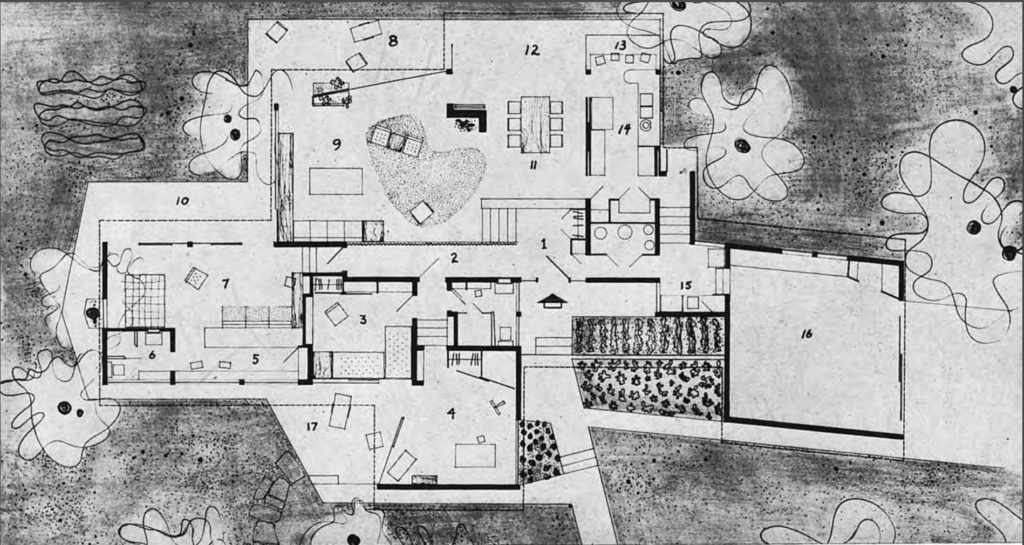
Layout
The home is somewhat long and narrow with the bedrooms, dressing room, bath and studio on one side and the garage and laundry located on the other. On the lowest level is the open living and dining area, which was designed to take advantage of the connected terrace. “Every effort has been made to incorporate the surrounding landscape with the living and dining area. The Brick fireplace, open on one side, is the only interruption to the complete openness of the face of the house.”
Unique to the design is a long corrugated glass wall that separated the living space from the upper hallway which provides some privacy while still allowing light into the room. Expansive glass windows and sliding doors are used throughout the home, allowing for great views of surrounding Eucalyptus trees and easy access to connecting terraces. Working with the sloped site, the rooms were designed to have a continuous concrete floor slab with their terrace as well as substantial roof overhang. In the dining area, glass sliders behind the fireplace can be used to create an outdoor eating environment.
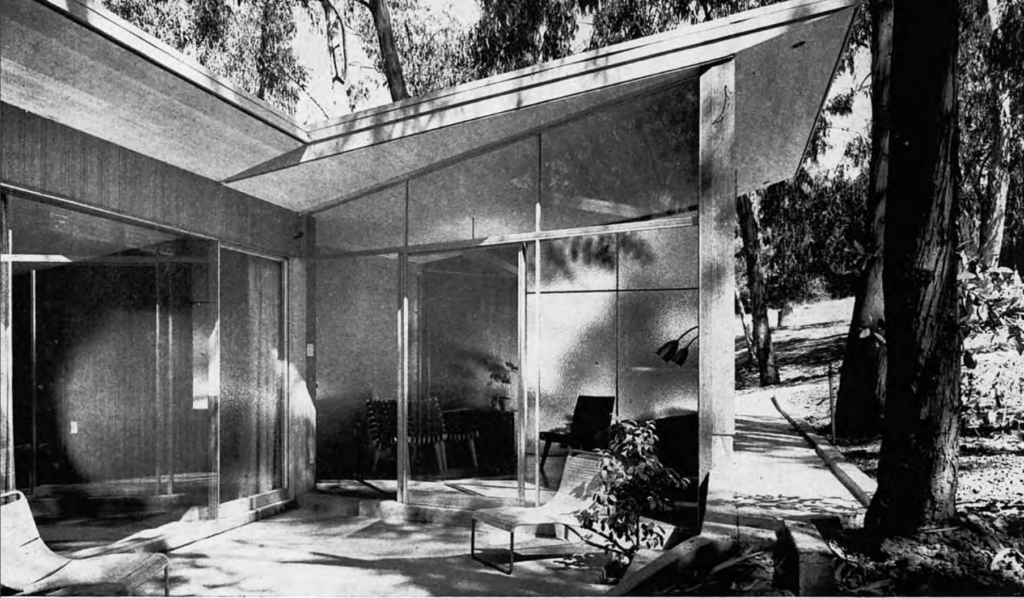
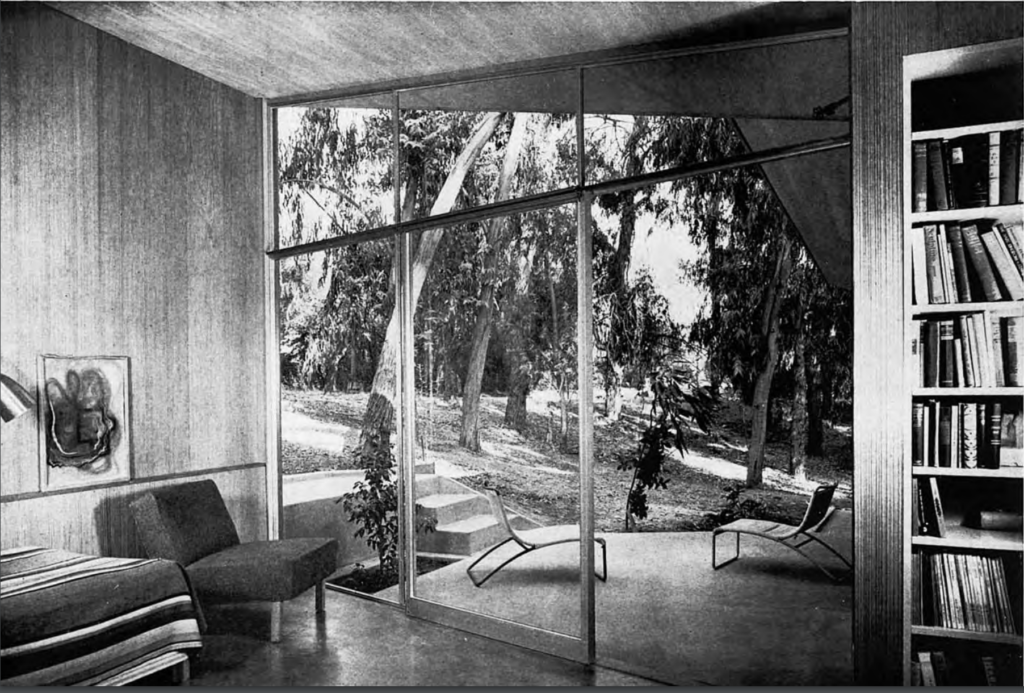
The House Today
There have been some sensitive interior updates throughout the years, and an addition built in 1968 that was done by one of the original architects, Kemper Nomland Jr. The home is a private residence and is on the National Register of Historic places. According to a 2017 Los Angeles Times article, “A recent renovation of the home won the previous owners multiple honors in 2015, including the City of Pasadena Historic Preservation Award and Pasadena’s Historic Preservation Commission’s Reconstruction Award.” You can take a look at recent images of the home on trulia.com.
Curious about other Case Study Houses? Find numbers 1-9 in our archives, working backwards from #9 here. Don’t forget to follow us on Instagram, Facebook and Pinterest for more mid century articles and ideas!

